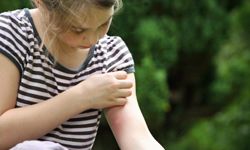
You're irritated — literally. You've developed a red ring around your lips. Where did it come from? Better yet, how can you get rid of it?
A red ring around the lips can signal several different conditions. Sometimes treatment is easy, as it generally is for a condition commonly called lip licker's dermatitis, which is simply an irritation of the skin. The main source of lip licker's dermatitis is self-explanatory: Saliva dries out natural oils from the skin around the lips, making the area chapped. In time, the skin looks inflamed. It can be red and itchy or dry and bumpy.
Advertisement
Lip licker's dermatitis is more formally known as a kind of irritant contact dermatitis. Anyone can develop it after repeated exposure to everyday substances such as water, soap or food, or even environmental factors such as wind or cold. Treatment merely involves avoiding the irritant. And, if you can't kick the habit of licking your lips, an emollient such as petroleum jelly can also be applied to restore moisture and heal the area.
The red ring around your lips could also be caused by an allergic reaction, which differs from a reaction to an irritant. A natural allergy causes the skin to react after contact with the allergen, whereas an irritant eventually causes damage to the skin over a period of time. The two reactions might look similar at first, but the allergic reaction can eventually progress to blisters, flaking and cracking. There are more than 3,000 known substances that can cause allergic contact dermatitis.
In addition to numerous ingredients in lipsticks that can trigger an allergic reaction, fragrances in skin care products and makeup are a common source of allergic contact dermatitis. Metals in jewelry, plants like poison ivy and over-the-counter medications can also trigger reactions. Once exposure to the allergen is gone, allergic contact dermatitis may clear up on its own, or treatments such as moisturizers, oral antihistamines or topical corticosteroids might be required.
If you're not sure what has caused the red ring around your lips, consult your doctor. To read more about lip care and skin reactions, visit the links on the next page.
Advertisement
